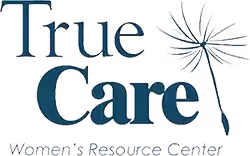True Care is pleased to announce we are upgrading our machine to include 3D Ultrasound! Our software is already installed in the machine. We are so excited and are in the process of setting up specialized 3D training so we can learn how to use our new software. So what is the difference between our current 2D ultrasound and 3D ultrasound?
2D (two dimensional ultrasound)
High frequency sound waves from the ultrasound probe are transmitted into the body and bounce off of the structures or anatomy (in our case a baby) directly beneath the probe and return with the data needed to create a flat two dimensional image. These images are like flat shapes drawn on a paper without volume (kind of like a square rather than a cube). The image that you see on the screen represents the structures directly beneath the probe. 2D ultrasound images are limited because of the lack of depth. They may leave an incomplete view of anatomy since the image is just a thin slice or cross-section rather then a whole organ or baby. It is very difficult to get the entire face of a baby for instance in a 2D image because of the depth of the human face. We can often get a profile picture of a face but it is hard to get a complete front image of the face (parts often get left out like noses or lips, etc).
3D (three dimensional ultrasound)
3D ultrasound is similar to 2D ultrasound except that it adds another dimension. The ultrasound machine takes multiple 2D images and adds them together to get a volume of 2D slices. Sometimes the sonographer has to gently move the probe across the desired anatomy while the machine acquires the image and some machines have special 3D probes that acquire the images while the sonographer holds the probe still. Either way the result is the same. The computer compiles all of the 2D slices into one three-dimensional image. Now you can see the nose, the lips, the face structure and even the eye sockets because depth has been added to the picture.
Waiting for Training
We are really excited to get started with our 3D scanning but we have to wait to get trained. We (after experimenting a few times) found out that it is much harder than it looks to get a good 3D image. Not only do we as sonographers need to acquire a good 3D volume but we must also learn to manipulate the volume of data stored in the computer into an image that makes sense to our eyes. We will let you know when we get trained and are ready to do some 3d ultrasound – we are excited to add this amazing technology to our True Care services!
